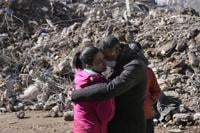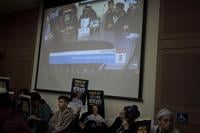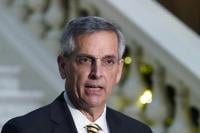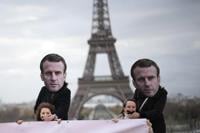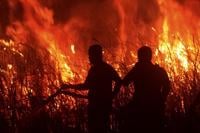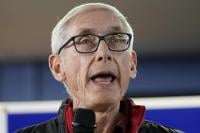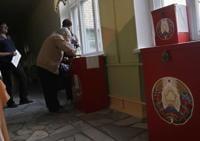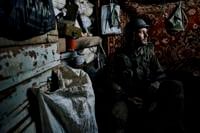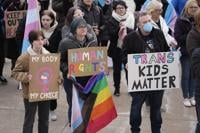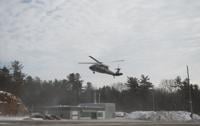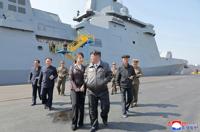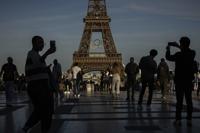ANTAKYA, Turkey (AP) — The earthquakes that killed more than 39,000 people in southern Turkey and northern Syria produced more grieving and suffering along with extraordinary rescues and appeals for aid.
Here's a look at key developments Wednesday from the aftermath of the earthquakes:
DEFYING ODDS AFTER NINE DAYS
A woman and her two children – a boy and a girl – were extricated from a collapsed apartment building in Antakya, Turkey, a full 228 hours after the first 7.8 magnitude earthquake struck in the early hours of Feb. 6. All three were taken to a hospital.
Rescuer Mehmet Eryilmaz said the woman, named Ela, asked what day it was when she was pulled from the wreckage.
“First, I held her hand,” Eryilmaz told Turkey’s state-run Anadolu news agency about reaching her in the rubble. “We talked, chatted and calmed (her) down. After that, we continued our work. ... We are very happy; it’s the fifth life we saved.”
Eryilmaz, who is a member of a team trained to perform mine rescues, added: “She asked for water in the first place but we did not give anything before the medical teams intervened. She asked ‘What day are we on?’”
Health worker Ali Parlas, who treated Ela and her son and daughter, said the three were dehydrated but in reasonable condition.
The children’s names are Meysam and Ali, Eryilmaz said.
to the grim work of locating the bodies of the remaining dead. The first earthquake and a 7.5 magnitude quake nine hours later destroyed thousands of buildings. Survivors and building experts have said to the massive death toll.
ANKARA EXPRESSES GRATITUDE
Turkey’s foreign minister thanked the international community Wednesday for its support following last week's earthquakes.
Foreign Minister Mevlut Cavusoglu said 76 countries sent search and rescue teams to help Turkish personnel comb through collapsed buildings. Twelve of the foreign teams have returned home after completing their missions, he said.
“Of course, everything isn’t perfect. There were shortcoming, shortcomings in coordination in the beginning, but in a short time, the system was established,” Cavusoglu said of .
The minister said 36,000 tents had arrived in Turkey from abroad to help shelter the tens of thousands of people left homeless and that another 51,000 were en route along with shipping containers that Qatar used to house soccer fans during last year's World Cup tournament.
Cavusoglu said his government also was working to ensure “urgent housing needs” were met with the local production of tents and containers that would be used for temporary shelter.
Aid is also coming from ethnic Greeks in Cyprus who for nearly half a century have been locked in a dispute with Turkey.
British soldiers serving with a United Nations peacekeeping force in Cyprus helped to transfer aid donated by Greek Cypriots in the south of the ethnically divided island nation to the breakaway Turkish Cypriot north. From there, it is expected to be taken to Turkey for distribution to earthquake victims.
At least two dozen Turkish Cypriot students taking part in a volleyball tournament in the Turkish city of Adiyaman died in the quakes, while many other people from Cyprus remained missing.
SUFFERING IN SYRIA
Along with the more than 35,000 people killed in Turkey, nearly 3,700 deaths were confirmed across the border in war-torn Syria, where the quakes who had endured 12 years of civil war.
The president of the International Committee of the Red Cross, Mirjana Spoljaric, said in a statement after visiting to Syria that “communities already devastated by the years of conflict are now being pushed beyond their limits.” She emphasized an immediate need for clean water.
While rescue teams from around the world went to help in Turkey, aid relief for Syria was slowed by demolished roads and by the tensions between rebel-held areas of the country and those controlled by .
Tuesday to provide aid for nearly 5 million Syrians for the coming three months. That was a day after the global body announced a deal with Damascus to deliver U.N. aid through two more border crossings from Turkey to rebel-held areas of northwest Syria.
, with fiercely cold weather adding to the misery.
CRACKS AND AFTERSHOCKS
Orhan Tatar, general director of earthquake and risk reduction at Turkey’s disaster management authority, said that the earthquakes had produced a shift of about 7.3 meters in the ground and a massive crack of about 400 kilometers.
The two earthquakes took place on five faults and were followed by some 3,900 aftershocks, Tatar said, calling the number a “very serious” and “unusual” amount. The aftershocks have meant people in the affected areas could feel significant shaking every 15 minutes, the official said.
Tatar said billions of cubic meters of rubble would have to be removed. He also warned that heavy snow in some rural areas was creating a risk of avalanches.
___
Bilginsoy and Wilks reported from Istanbul. Menelaos Hadjicostis contributed to this report from Nicosia, Cyprus.
___
Follow AP's earthquake coverage at


